Americans are experts on gaining size. Sadly, with over a third of our population classified as obese, that's not the kind of "mass" you're after. Yet that's exactly what indiscriminate eating and a lack of exercise can do for you.
If you're committed to a resistance-training program, you can instead pack on muscle by following a number of key nutrition and supplementation tips. But first you'll have to toss out any remnants of how most Americans eat.
To gain the right kind of mass, we enlisted two captains of the Muscle Militia, Twinlab athletes Ronnie Milo and Jason Wheat, to help us compile the 24 tips presented below.
Sure, eating clean and healthful foods is more difficult than eating whatever you want, but we're pretty sure you don't want to look like that other 33 percent.
1. Tip The Scales
Whether you're just trying to add some off-season size, or you're a hard-gainer who has trouble adding mass, growing muscle means consuming more calories—assuming you're already training hard. While you can log your meals over the course of a week to compute your average daily calories, perhaps the simplest step is to consume one additional mini-meal during your day that adds calories over and above what you normally eat.
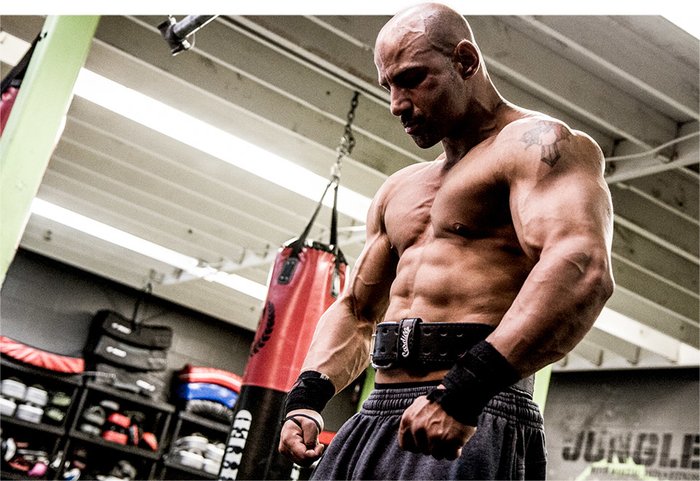
Whether you're just trying to add some off-season size, or you're a hard-gainer who has trouble adding mass, growing muscle means consuming more calories—assuming you're already training hard.
By ensuring you have a caloric surplus, you provide your muscles with the raw materials to repair tissue damage brought on by heavy training to support growth.
A mini-meal of about 300 calories can be inserted anywhere during your day, preferably during your longest stretch between whole-food meals.
2. Assess And Grow
If, after two weeks, the scale still isn't budging, and you're not seeing gains in strength with the addition of a single mini-meal, add another. (The scale can't be your sole determinant, because you may be dropping body fat while you're adding muscle, in which case the scale may not budge.)
By increasing your daily calories slowly, any gains you make are less likely to be ones that ring your midsection. The extra meal will have to become part of your daily routine as well. This is especially true for hard-gainers and individuals with a fast metabolism who have difficulty adding muscle.
3. Eat More Meals More Often
If you're active and train hard, you likely burn a lot of calories each day. It's very difficult to eat clean foods that replace all the energy you've spent in just three meals. That's why bodybuilders—competitive and recreational alike—eat 5-8 meals per day to support mass-building. While most individuals still eat breakfast, lunch, and dinner, they also eat a number of high-protein snacks as well.
If you're looking to add size, it makes sense to eat multiple meals every day, not just three. Taking your meals to work or school means planning and preparation, but it's an essential habit that separates those who succeed from those who don't.
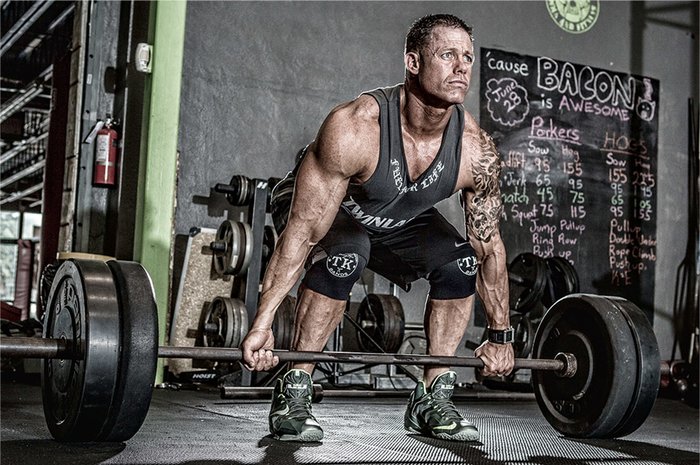
I split my macros into eight meals so i'm eating a meal about every 2.5 hours. I like to eat that often so i'm never hungry.
"I eat eight times a day," says Orlando fireman and Twinlab Muscle Militia captain Jason Wheat, a former defensive lineman in college football who now competes in powerlifting. "I split my macros into eight meals so I'm eating a meal about every 2.5 hours. I like to eat that often so I'm never hungry. When I get hungry or miss a meal, I tend to want to cheat, or overeat. If I do get hungry and need a snack, my go-to is either a tablespoon of peanut butter or a handful of almonds, which I would count against my macros for the next meal."
"This is where supplementation is key," says Militia member and amateur bodybuilding champion Ronnie Milo of Sunrise, Florida. "Supplements allow you to to add extra calories to aid you in your goals. We all know that it's difficult to try and increase your calories from whole-food sources alone. It's a challenging task to eat as many times as possible and then add more calories on top of that."
4. Protein Counts
Protein foods are broken down into amino acids, which are then reassembled in your body. The aminos that enter muscle cells can help repair muscle tissue damaged from a hard workout, enabling them to grow larger. How much protein does a hard-training bodybuilder need? More than the average Joe who doesn't train, so beware of lowball estimates intended for the general public.
The simplest way to remember how much protein you need each day is to use your body weight in pounds. Hence, if you weight 210 pounds, try to consume at least 210 grams of protein per day. If you eat six meals and mini-meals a day, that's 35 grams per meal.
For card-carrying Militia members, sometimes even that's not enough. "I recommend 1 gram minimum, up to 2 per pound of bodyweight," says Wheat. "The more active you are, the more protein your muscles need for growth.
5. Eat Clean
You have any number of food options for a given meal that have various macronutrient and micronutrient profiles, but remember the old adage: "You are what you eat."
"I believe the most important aspect of gaining quality weight is high-quality food choices," says Milo. "Your body needs quality food and nutrients to aid in performance and recovery. A lot of beginners and advanced athletes make mistakes when trying to add quality weight, making poor food choices like fast foods or processed foods."
6. Whole-Food Proteins
Get your protein from a variety of whole-food sources including dairy, fish, fowl, steak, and eggs. Choose leaner cuts of steak (opt for "loin" and "round" cuts, which have the lowest amounts of saturated fat) and remove the skin from turkey and chicken.

Fattier cuts of beef like prime rib and even ribeye, as well as higher-fat dairy products, can cause your calories and daily fat intake to skyrocket. You want to moderately increase your daily calories, and too much dietary fat that's consumed with your protein foods can quickly contribute to the wrong kinds of weight gain.
7. Measure Your Intake
What Does 40 Grams Of Protein Look Like?
- 5-1/2 oz. top sirloin
- 5-1/2 oz. chicken breast
- 6 large eggs
- 6-1/2 oz. tilapia
- 5 cups low-fat milk
- 2 scoops protein powder
It's one thing to read that you need 40 grams of protein at each meal, but do you know what that looks like if you're in a cafeteria line or throwing chicken breasts on the barbecue? And how many ounces of steak is that?
Learn how to eyeball what 40 grams of protein looks like to ensure you're getting enough of this muscle-building nutrient at each meal.
8. Fix It Right
The right choices of protein-rich foods like chicken breast can be spoiled by the wrong preparation methods. When preparing your foods at home, try grilling or broiling your meats; battered and fried foods boost fat-content and calories, and are less healthy.
Avoid oils, butter, and sauces in favor of a can of six-pack friendly Pam whenever you can.
9. Don't Fear Saturated Fat
If you eat protein from animal sources, you're also getting saturated fat with your protein. You don't want to go overboard, but nor should you cut out saturated fats completely; they're important for hormone production and the fat-soluble vitamins A, D, E, and K. "A low-fat diet can, over time, lower your testosterone levels, which will hinder your muscle gains," says Wheat.
While recent research shows that saturated fat intake may not be linked to greater risk of heart disease, evidence does show that replacing saturated fat with foods that are high in polyunsaturated fats does reduce cardiovascular risk.
On a mass-building plan, you should be getting 25-30 percent of your daily calories from dietary fats. Divide your fat intake between healthier versions (including olive and canola oils, nuts and seeds, fatty fish) and saturated fats (which are contained in animal proteins such as dairy, meat, and eggs).
10. Consume Liquid Calories
Prepping for each and every meal is next to impossible unless you work from home, so a scoop or two of powder in a shaker cup is a great way to drink your calories between meals. Besides keeping amino acids in constant supply in your bloodstream, you inhibit the snack attack that can creep up on you between whole-food meals, reducing your risk of impulsively choosing the wrong foods when you're really hungry.
"My days can be lengthy at times with travel and meetings," says Milo, who is also Sports Nutrition Regionals Sales Manager with Twinlab. "I rely on quality supplements to fill a quick meal or energy source. This also keeps me from making bad food decisions when food isn't always on hand."
Looking for a quick food fix? Whey protein isolate dissolves easily with water so you don't need a blender. What's more, liquid meals are absorbed quickly and won't adversely affect your appetite for your bigger whole-food meals later in the day.
If you find it challenging to eat a large number of calories at a whole-food meal, liquid calories can help make up the difference.
11. Ignore Your Sweet Tooth
Sugar-sweetened drinks and processed foods are nutritional landmines. These empty calories displace healthier options that could've been hard at work helping you add quality mass. Clean your kitchen of these unhealthy foods so you're not tempted when a craving arises.
Also, never go grocery shopping on an empty stomach. And eat a high-protein food before you leave the house on weekends when you're running errands, so you're not hungry and don't give in to fast-food cravings.

12. Cheat To Win
It's nearly impossible to eat clean all the time, so allowing yourself a cheat meal at regular intervals—say, on a weekend afternoon—can make sticking to a diet easier, and the bump in calories may help boost growth.
Just watch that you don't overdo a cheat meal and make it a cheat day—or worse, a cheat weekend—which can then throw you completely off a clean diet. Use cheat meals as rewards for a good week of clean eating. Use moderation. Resist the urge to splurge.
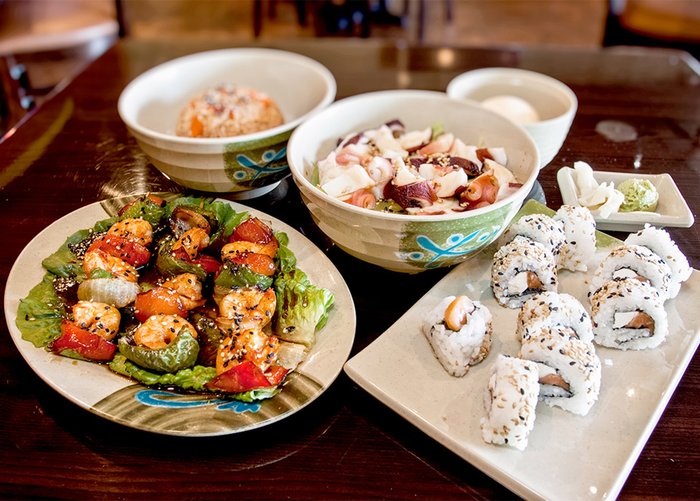
Allowing yourself a cheat meal at regular intervals—say, on a weekend afternoon—can make sticking to a diet easier, and the bump in calories may help boost growth.
13. Choose Slower Carbs
Nearly half of your total daily calories come from carbohydrates, but there's a big difference between the simple ones and the complex variety. Complex carbs such as brown rice, whole grains, yams, sweet potatoes, and quinoa are longer chains of sugar molecules—hence they take longer to digest and absorb.
The benefit is that you'll have sustained energy throughout the day, and the lower insulin response means you'll be less likely to store any excess calories as body fat. Opting for complex carbs with minimal processing is better for your health and to keep body fat in check.
14. Speed It Up Post-Workout
The only time a high-glycemic carb (think sugars like dextrose and glucose and highly processed carbs like bagels and white rice) is your carb of choice should be after your workout, when your muscles are hungry to replenish spent glycogen stores.
The insulin spike helps drive those fast carbs—and, of course, the 40 grams of protein you consumed with it—quickly into cells for repair and growth. This insulin spike that you can manipulate post-workout is one reason why carbs are called the anabolic nutrient. Consuming simple sugars at any other time is more likely to contribute to gains in body fat.
What you don't need to do is go sprinting to the front desk to slug down a protein shake the instant your last set ends. The influx of protein can wait till you get home, son.
15. Dine Out With Descretion
As obesity has skyrocketed in recent decades, so has the number of times Americans eat out. Many Americans visit restaurants twice as often as they did 30 years ago. The problem with eating out is that it encourages the wrong kind of mass-building.
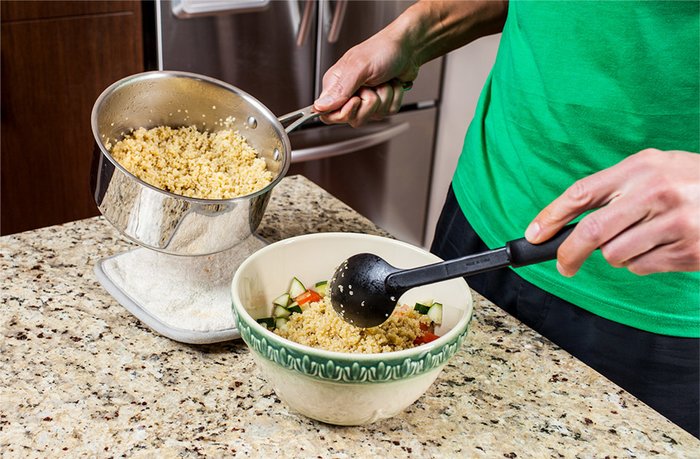
Make your meals and eat at home as much as possible, and limit trips to restaurants to just once a week
With larger portion sizes, unlimited drink refills, and tempting desserts, you're almost guaranteed to overeat. The lesson? Make your meals and eat at home as much as possible, and limit trips to restaurants to just once a week.
16. Bring Order To Your Orders
When you do eat out, scan the menu for the cleanest protein foods you can find. If you don't see one, ask your server if one can be made without sauces or oils. "The majority of restaurants have choices like plain grilled chicken, beef, or fish," says Milo. "Most of them will work within your needs—all you have to do is ask." Well, they don't say no to Milo, anyway...
Side salads (dressing on the side) and veggies make good side choices to contain total calories. With some dessert choices topping 1,000 calories, you could end up having to do three hours on the bike just to burn that off. Opt for fruit if you must have something sweet.
17. About That Fast Food Meal
We've all been there: You're in a terrible hurry, have no food, and you're starved. Whatever Golden Arches you pull into, you're surround by bad food choices that'll tally up a day's worth of fat and sodium in a single meal. If you can muster any willpower, opt for a grilled chicken sandwich (or two, if you eat like a bodybuilder) and ditch the buns. You can't go wrong with a salad either, unless you slather it in dressing.
The come-hither smell of French fries can be hard to resist; but resist you must. Here again, get the 40 grams of protein and fill up with veggies as best as possible. French fries, by the way, do not count as a clean potato.
18. Eat A Pre-Bed Snack
Late-night munchies can ruin a day's effort of clean eating, so if you're looking for a midnight meal, a shake made of slow-digesting micellar casein protein can feed your muscles during your nightly slumber. A half-cup of cottage cheese is also high in casein, and provides 14 grams of protein.
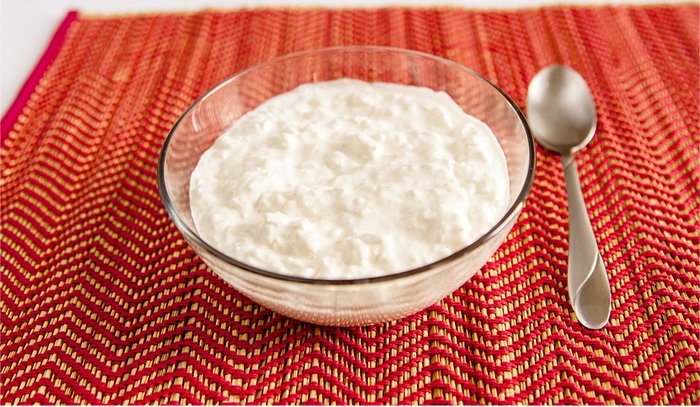
A half-cup of cottage cheese is also high in casein, and provides 14 grams of protein..
Add some almonds and you get essential fats and some added protein as well. Carb-oholics watch out: Consuming too many at bedtime can elevate insulin levels, meaning those extra calories can more easily be shuttled into fat stores.
19. Creatine Boosts Metabolism
The importance of whey isolate and casein for boosting your protein intake can't be overstated, but other supplements can support anabolism too. Creatine monohydrate, in fact, is well supported by research to boost strength and size gains. Naturally found in red meat, creatine increases the volume of muscle cells, which helps signal anabolism, as well as short-term energy.
20. The Three Amigos
The branched-chain amino acids—leucine, isoleucine, and valine—are also a part of a mass-building supplement stack. They share a unique structure that's preferentially taken up by muscle, and ingestion directly stimulates anabolism. The supplement can also reduce exercise-induced muscle pain and decrease mental fatigue during intense exercise.
21. Boost Blood Flow
L-arginine is a conditionally essential amino acid that helps produce nitric oxide, which has been shown to elevate skeletal muscle blood flow. This not only allows for improved delivery of nutrients but also greater clearing of metabolic byproducts (sometimes called waste products) in working muscles. This helps you work out longer and harder. L-arginine has also been shown to increase anabolic substrates like growth hormone and insulin.
22. Never Miss A Meal
We can all get caught up with our schedules and appointments, running late, and skipping meals. But I'll bet you almost never miss a workout. Adopt the mindset that missing a meal is as bad as missing a workout. That might mean planning and preparing meals on weekends, carrying a cooler, and occasionally carrying snacks with you on the go.
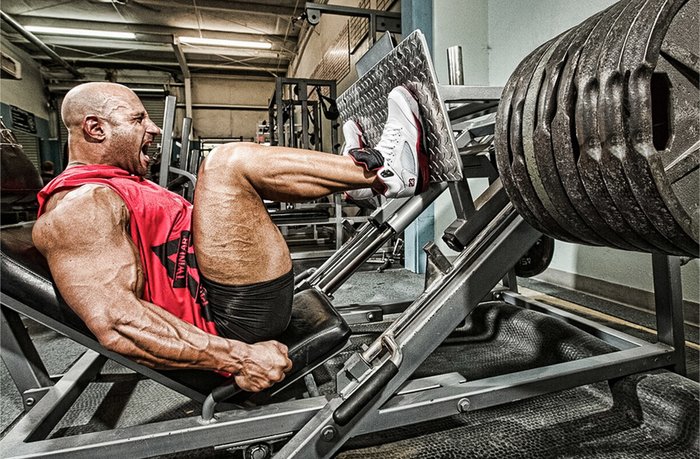
We can all get caught up with our schedules and appointments, running late, and skipping meals. But i'll bet you almost never miss a workout.
If your goal is mass, you can't expect results when you're not fully committed. We all have demanding schedules and important obligations; what separates winners from losers is planning and commitment, not making excuses.
"The best way to stick to a diet is preparation and consistency," says Milo. "Preparation is key. This will aide you in staying on the right track, and deter you from making bad decisions."
23. Make Time For A Good Start
What's the second thing you do in the morning (after hitting the snooze button a few times)? Eating a hearty breakfast had better be your answer, because you've probably gone up to 10 hours without eating. If your morning meal includes a cartoon tiger, we can likely guess why you're not adding quality mass.
Get those 40 grams of protein with eggs or egg whites, slices of beef or chicken, a glass of milk, or a high-protein cereal. If you're in a hurry, a morning protein shake is the way to go.
24. Sleep For Gains
You train hard and eat right, so what could be missing? Since your muscles get stimulated during your workout but actually grow during your recovery periods, ensure you're allotting enough time for a restful night's sleep. Consider this sleep stack to nourish your muscles all night long: melatonin, micellar casein, ZMA, gamma-aminobutyric acid (GABA), and 5-Hydroxytryptophan (5-HTP).
The slow-releasing casein defends against muscle catabolism, while ZMA (which contains zinc) has been shown to increase testosterone and IGF-1 levels. GABA and 5-HTP both promote healthy, deep sleep, which is essential for GH release and muscular recovery.

Bill Geiger
Bill Geiger, MA, has served as a senior content editor for Bodybuilding.com and group editorial director with MuscleMag and Reps magazines.

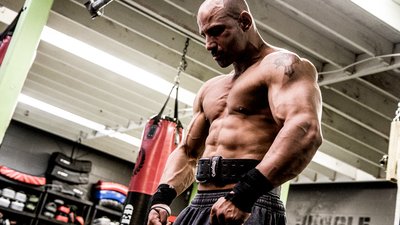

No comments:
Post a Comment